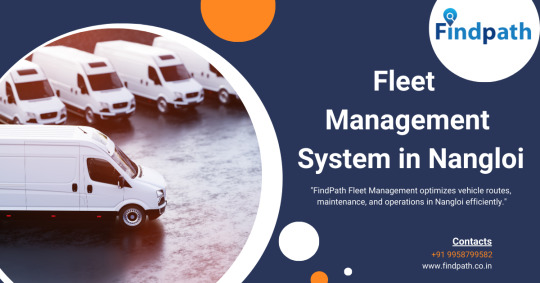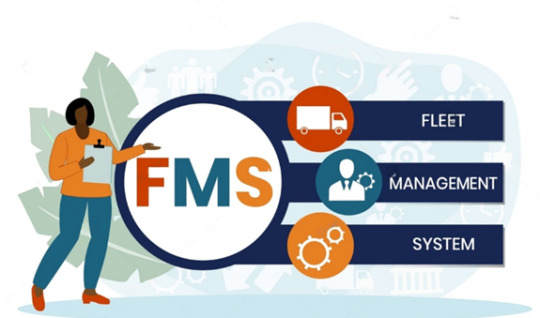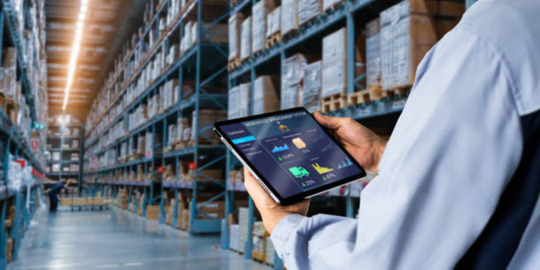#fleet monitoring systems
Explore tagged Tumblr posts
Text
Fleet management software is a technology-driven solution designed to help businesses manage, track, and optimize their fleet of vehicles efficiently. It comprises a range of functionalities, including vehicle tracking, maintenance scheduling, fuel management, compliance monitoring, and more.
#FleetManagementSoftware#CustomSoftwareDevelopment#FleetManagementApp#vehicle fleet maintenance app#vehicle fleet management software#fleet monitoring systems
0 notes
Text
#iot connected dashcams#IoT dashcams#iot fleet management#fleet management system#legacy iot#fleet management solutions#real-time monitoring#IoT connectivity benefits
0 notes
Text
Your Silent Witness On The Road: Car DVR Camera Recorder
Your Silent Witness on the Road – the Car DVR Camera Recorder captures every detail of your journey with high-definition video. Ideal for accident evidence, insurance claims, and monitoring driving behavior, it offers loop recording, night vision, and motion detection, ensuring 24/7 protection and peace of mind while driving. Check out this infographic to learn about your silent witness on the road, the Car DVR camera recorder. https://bit.ly/4dOeduz

0 notes
Text
#fuel monitoring system qatar#ivms in vehicle monitoring system qatar#fleet management service qatar
0 notes
Text

Keep your fleet in peak condition with our state-of-the-art vehicle health monitoring system. Monitor performance metrics, receive alerts for maintenance needs, and prevent breakdowns before they happen—ensuring reliability and safety on the road.
#fuel management#fleet management system#logistics management system#transportation management system#vehicle health monitoring system
0 notes
Text
Enhancing Road Safety with Advanced Technology
In today's rapidly evolving automotive landscape, safety technology plays a crucial role in preventing accidents and ensuring driver protection. Among the most innovative advancements are the forward crash avoidance system and fleet monitor technologies. These systems not only enhance vehicle safety but also provide significant benefits for fleet management.
Forward Crash Avoidance System
A forward crash avoidance system is designed to detect potential collisions before they happen. Utilizing sensors, cameras, and radar, this system assesses the road ahead for any obstacles or sudden stops. When a potential collision is detected, the system alerts the driver through visual and auditory warnings. In some advanced models, the system can even engage automatic braking to prevent or mitigate the impact. This proactive safety measure significantly reduces the risk of accidents and helps drivers maintain safer distances from other vehicles.
Fleet Monitor
For businesses managing a fleet of vehicles, a fleet monitor is an essential tool for optimizing operations and enhancing safety. A fleet monitor tracks real-time data on vehicle performance, driver behavior, and location. This system allows fleet managers to monitor various metrics such as fuel efficiency, maintenance needs, and driving patterns. By analyzing this data, companies can make informed decisions to improve fleet efficiency, reduce operational costs, and ensure the safety of their drivers. Integrating a fleet monitor with a forward crash avoidance system further enhances the safety and efficiency of fleet operations.
Conclusion
The integration of a forward crash avoidance system with a fleet monitor offers a comprehensive approach to vehicle safety and fleet management. These technologies not only help in preventing accidents but also provide valuable insights for improving fleet operations. As automotive technology continues to advance, investing in these systems ensures that drivers and fleets remain at the forefront of safety and efficiency.
Revolutionizing Fleet Safety with Cutting-Edge Technology
Introduction
As the demand for safer and more efficient transportation grows, the integration of advanced safety technologies has become a priority. Two key innovations in this field are the forward crash avoidance system and fleet monitor. These technologies are revolutionizing how we approach vehicle safety and fleet management.
Forward Crash Avoidance System
The forward crash avoidance system is a groundbreaking technology designed to prevent accidents by providing early warnings to drivers. This system uses a combination of radar, cameras, and sensors to continuously monitor the road ahead. When it detects a potential collision risk, it immediately alerts the driver with visual and audio signals. Additionally, many systems are equipped with automatic braking capabilities to reduce the severity of a collision or avoid it entirely. This advanced safety feature significantly enhances driver awareness and reduces the likelihood of accidents.
Fleet Monitor
A fleet monitor is an indispensable tool for companies operating multiple vehicles. It provides real-time insights into vehicle performance, driver behavior, and overall fleet health. By tracking parameters such as location, speed, and fuel consumption, fleet managers can optimize routes, reduce fuel expenses, and schedule timely maintenance. The addition of a forward crash avoidance system to each vehicle in the fleet further ensures that safety is prioritized, minimizing the risk of accidents and protecting both drivers and assets.
Conclusion
The combination of a forward crash avoidance system with a fleet monitor represents a significant advancement in vehicle safety and fleet management. These technologies work synergistically to enhance safety, improve operational efficiency, and reduce risks on the road. As technology continues to evolve, embracing these innovations will be crucial for businesses and drivers committed to maintaining the highest standards of safety and efficiency.

1 note
·
View note
Text
Save Time and Reduce Cost with Automation
Let’s talk about something we all wish we had more of in the trucking industry: time and money. It’s no secret that running a trucking business is tough. Between keeping up with the endless regulations, dealing with unexpected repairs, and managing all the paperwork, it feels like there are never enough hours in the day. And let’s not even start on the costs piling up. But what if I told you…

View On WordPress
#automated billing trucking#automated dispatching#automated invoicing#automated trucking operations#business#cash flow management#driver behavior monitoring#fleet management automation#Freight#freight automation#freight industry#Freight Revenue Consultants#fuel savings trucking#improve trucking productivity#logistics#logistics automation#maintenance scheduling#optimized trucking routes#reduce costs trucking#save time trucking#small carriers#telematics systems#Transportation#truck performance monitoring#Trucking#trucking automation#trucking business automation#trucking business growth#trucking business solutions#trucking compliance management
0 notes
Text

Boost Your Fleet Safety with the Right ADAS: A Quick Guide
Ensuring fleet safety is paramount, and Advanced Driver Assistance Systems (ADAS) can make a significant impact. Here’s a concise guide to choosing the best ADAS for your fleet:
Assess Needs: Understand your fleet's specific safety challenges.
Key Features: Prioritize collision avoidance, lane departure warnings, and adaptive cruise control.
Driver Training: Ensure drivers are trained to use ADAS effectively.
System Integration: Check compatibility with existing systems.
Investing in the right ADAS can reduce accidents, improve driver behavior, and save costs. For more details, visit the full guide. #FleetSafety #ADAS
#RoadSafety#telematics fleet management system#Fleet Management Software#Fleet Monitoring System#GPS Fleet Management System#telematics solutions
0 notes
Text
Fleet Management System in Nangloi

Findpath's fleet management system in Nangloi provides comprehensive solutions tailored for businesses to streamline their logistics operations. Utilizing advanced GPS technology and telematics, the system offers real-time tracking of vehicles, ensuring precise location updates and route optimization. This capability enhances operational efficiency by reducing fuel consumption, optimizing delivery timelines, and improving overall fleet productivity. Additionally, the system facilitates proactive maintenance scheduling, minimizing downtime and extending vehicle lifespan. With enhanced security features, businesses in Nangloi can effectively monitor and secure their fleet, promoting safer operations and better customer service through accurate ETA predictions and responsive management tools.
#Advanced Fleet GPS Solutions in Janakpuri#Fleet Monitoring System in Pitampura#Best Fleet Tracker for a car in Nangloi#Fleet tracking companies in Punjabi Bagh
0 notes
Text
Streamlining Operations: The Role of Advanced Fleet Management Systems
In the dynamic landscape of logistics and transportation, efficiency and precision are paramount. To navigate these challenges effectively, businesses are increasingly turning to advanced technology solutions like Fleet Management Systems (FMS). These systems encompass a range of capabilities designed to optimize every aspect of fleet operations, from logistical planning to vehicle maintenance and beyond.
Fleet Management System (FMS)
At the heart of modern fleet operations lies the Fleet Management System (FMS). This comprehensive platform integrates various functionalities to enhance fleet efficiency and reduce operational costs. Key features typically include:
Real-Time Vehicle Tracking: Utilizing GPS technology, FMS allows precise tracking of fleet vehicles, enabling businesses to monitor location, speed, and route adherence in real-time. This capability is invaluable for optimizing delivery schedules, improving customer service, and ensuring regulatory compliance.
Route Optimization: FMS analyzes historical data and real-time traffic information to suggest the most efficient routes for each vehicle. By minimizing travel time and fuel consumption, businesses can significantly enhance operational efficiency and reduce carbon footprint.
Maintenance Scheduling: Predictive maintenance algorithms within FMS monitor vehicle health in real-time, alerting fleet managers to potential issues before they escalate. This proactive approach minimizes downtime, extends vehicle lifespan, and ensures fleet safety.
Fuel Management System
Fuel expenses constitute a substantial portion of fleet operating costs. A Fuel Management System (FMS) plays a pivotal role in monitoring and optimizing fuel usage. Key features include:
Fuel Monitoring: FMS tracks fuel levels and consumption patterns across the fleet, identifying discrepancies and potential fuel theft. This transparency enables precise budgeting and cost control.
Optimization Tools: By analyzing driving behavior and vehicle performance data, FMS identifies opportunities to improve fuel efficiency. Techniques such as idle-time reduction and eco-driving practices can lead to significant fuel savings.
Logistics Management System (LMS)
In logistics, efficient coordination and streamlined processes are essential for meeting delivery deadlines and maintaining customer satisfaction. A Logistics Management System (LMS) integrates diverse functions to optimize supply chain operations, including:
Order Processing: LMS automates order entry, processing, and fulfillment, ensuring accurate and timely delivery.
Inventory Management: Real-time inventory visibility enables precise stock control and minimizes stock-outs, enhancing overall supply chain efficiency.
Transportation Management System (TMS)
Transportation Management System (TMS) focuses on planning, executing, and optimizing the movement of goods. Key features include:
Freight Management: TMS facilitates freight consolidation and route optimization to minimize shipping costs and transit times.
Carrier Management: Evaluates carrier performance, negotiates rates, and ensures compliance with shipping regulations.
Driver Behavior Monitoring System
Driver behavior significantly impacts safety, fuel efficiency, and operational costs. A Driver Behavior Monitoring System (DBMS) uses telematics and onboard sensors to assess driver performance in real-time. Key metrics include:
Speeding and Harsh Driving: DBMS identifies instances of speeding, harsh braking, and acceleration, promoting safer driving habits and reducing accident risks.
Compliance Monitoring: Ensures adherence to traffic laws, company policies, and regulatory requirements, mitigating legal and financial risks.
Vehicle Health Monitoring System
Proactively maintaining vehicle health is crucial for minimizing downtime and extending asset lifespan. A Vehicle Health Monitoring System (VHMS) utilizes onboard diagnostics and predictive analytics to:
Predictive Maintenance: VHMS identifies potential mechanical issues before they lead to breakdowns, optimizing fleet uptime and reducing repair costs.
Performance Analytics: Monitors engine health, emissions, and overall performance metrics to optimize fuel efficiency and compliance with environmental regulations.
Embracing Innovation for Competitive Advantage
As businesses navigate an increasingly complex operational environment, the integration of advanced fleet management technologies becomes not just a strategic advantage but a necessity. By leveraging Fleet Management Systems, Fuel Management Systems, Logistics and Transportation Management Systems, along with Driver Behavior and Vehicle Health Monitoring Systems, organizations can achieve operational excellence, reduce costs, and enhance customer satisfaction. Embracing these innovations ensures that fleets remain agile, efficient, and well-positioned for future growth in the competitive marketplace.
#Fleet management System#fuel management system#Logistics management system#transportation management system#driver behaviour monitoring system#vehicle health monitoring system
0 notes
Text
Exploring the Mechanics of Automatic Tire Inflation System

Automatic Tire Inflation Systems (ATIS) are sophisticated mechanisms designed to monitor and regulate tire pressure automatically, ensuring optimal performance and safety on the road. Delving into the mechanics of these systems provides insights into their operation and benefits.
Understanding Automatic Tire Inflation Systems: Automatic Tire Inflation Systems are integrated into vehicles to monitor tire pressure and adjust it as needed to maintain optimal levels. These systems consist of sensors, valves, and controllers that work together to ensure tire pressure remains within specified parameters, enhancing vehicle safety and efficiency.
Sensor Technology: Automatic Tire Inflation System utilize sensor technology to monitor tire pressure in real-time. These sensors are typically installed inside the tires or within the valve stems and continuously transmit pressure data to the system's control unit.
Valve Mechanism: The heart of an Automatic Tire Inflation System lies in its valve mechanism, which regulates the flow of air into and out of the tires. When tire pressure drops below the desired level, the valve opens to allow air to enter the tire, inflating it to the correct pressure. Conversely, when pressure exceeds the set threshold, the valve releases air to prevent overinflation.
Controller Unit: The controller unit serves as the brain of the Automatic Tire Inflation System, receiving input from the sensors and orchestrating the inflation or deflation process as necessary. It analyzes tire pressure data in real-time and sends commands to the valve mechanism to adjust pressure levels accordingly.
Get More Insights On This Topic: Automatic Tire Inflation System
#Automatic Tire Inflation System#Tire Pressure Monitoring#Vehicle Safety#Tire Maintenance#Efficiency#Automotive Technology#Fleet Management#Tire Performance
0 notes
Text
AI-POWERED FLEET MANAGEMENT
🚗 Fleetblox Cloud Garage is compatible with 43 car makes, seamlessly connecting to over 177 million vehicles through a single platform. 🌍 With global coverage across North America and Europe, our advanced AI-driven solution 🤖 optimizes fleet management, ensuring maximum operational efficiency ⚙️ and streamlined performance—all in …
#AI powered fleet solution#Cloud-based fleet tracking#No hardware fleet management#Electric vehicle fleet integration#Remote fleet monitoring#Vehicle tracking system#Virtual parking management#Real-time fleet analytics#GPS-free fleet solution
0 notes
Text
Revolutionizing Transportation: Transport Monitoring and Management Software
In today’s fast-paced world, efficient transportation is essential for businesses across various industries to thrive. Whether it’s logistics companies managing fleets of vehicles or public transportation agencies coordinating routes and schedules, the ability to monitor and manage transportation operations effectively is paramount. Transport monitoring and management software have emerged as powerful tools to streamline operations, optimize resources, and improve service quality. In this blog, we’ll explore the features and benefits of transport monitoring and management software and how it’s revolutionizing the transportation industry.
Real-Time Tracking and Visibility: Transport monitoring and management software provide real-time tracking and visibility into the location and status of vehicles, assets, and shipments. By leveraging GPS technology and IoT sensors, businesses can monitor their fleets’ movements, track cargo in transit, and receive alerts for any deviations from planned routes or schedules. This real-time visibility enables proactive decision-making, allowing businesses to address issues promptly and minimize disruptions to operations.
Optimized Route Planning and Dispatching: One of the key features of transport monitoring and management software is optimized route planning and dispatching. Using advanced algorithms and historical data analysis, the software can determine the most efficient routes for vehicles, taking into account factors such as traffic conditions, road closures, and delivery deadlines. By optimizing routes, businesses can reduce fuel consumption, minimize travel time, and improve overall operational efficiency.
Enhanced Asset Utilization: Transport monitoring and management software enable businesses to maximize the utilization of their assets, whether it’s vehicles, equipment, or facilities. By monitoring asset usage and performance metrics, businesses can identify opportunities to improve asset efficiency, reduce downtime, and extend asset lifespan. This proactive approach to asset management helps businesses optimize resource allocation and improve return on investment.
Improved Customer Service: Efficient transportation operations are essential for delivering superior customer service. Transport monitoring and management software enable businesses to provide accurate and reliable delivery estimates, track shipments in real-time, and proactively communicate with customers about the status of their orders. By enhancing transparency and communication, businesses can build trust with their customers and deliver a positive experience that drives loyalty and repeat business.
Compliance and Reporting: Compliance with regulatory requirements is a critical aspect of transportation operations. Transport monitoring and management software help businesses stay compliant by automating compliance reporting and documentation processes. From driver hours-of-service logs to vehicle inspection records, the software captures and maintains all necessary documentation, ensuring that businesses adhere to regulatory standards and avoid costly fines and penalties.
Conclusion: Transport monitoring and management software are transforming the transportation industry by providing businesses with the tools they need to optimize operations, improve efficiency, and deliver exceptional service to their customers. With features such as real-time tracking and visibility, optimized route planning, enhanced asset utilization, improved customer service, and automated compliance reporting, businesses can stay ahead of the curve in an increasingly competitive market. By investing in transport monitoring and management software, businesses can unlock new opportunities for growth, innovation, and success in the transportation industry.
#artificial-intelligence#Fleet Management Software dubai#Fuel management system in dubai#smart-cities#supply-chain#supply-chain-management#technology#transport monitoring and management software
0 notes
Text
🚘 Smart Driver Monitoring System: Enhancing Safety & Preventing Accidents 🚨
The Smart Driver Monitoring System is a cutting-edge technology designed to enhance road safety by detecting and preventing risky driving behaviors. Using real-time fatigue detection, the system monitors eye movements and facial expressions to identify drowsiness before it becomes dangerous. To learn more, click here: https://qr.ae/pYl2dv

0 notes
Text
Revolutionizing Mobility: A Comprehensive Guide to Advanced Fleet Management Technologies
Introduction:
In the ever-evolving landscape of transportation and logistics, businesses are constantly seeking innovative solutions to enhance efficiency, reduce costs, and improve overall performance. One of the key elements contributing to the success of modern fleets is the integration of advanced management systems. In this blog post, we will delve into the significance of various cutting-edge technologies, including fleet management systems, fuel management systems, logistics management systems, transportation management systems, driver behavior monitoring system, and vehicle health monitoring systems.
Fleet Management System:
Fleet management system have become a cornerstone for businesses with a fleet of vehicles. These systems offer a comprehensive suite of tools to track and manage various aspects of a fleet, including vehicle location, maintenance schedules, fuel consumption, and driver behavior. Real-time data and analytics empower fleet managers to make informed decisions, leading to optimized routes, reduced fuel consumption, and enhanced overall operational efficiency.
Fuel Management System:
Fuel costs are a significant expenditure for any fleet-based business. Implementing a fuel management system provides a strategic approach to monitor fuel usage, identify inefficiencies, and mitigate unauthorized fuel transactions. By leveraging data analytics, businesses can optimize fuel consumption, reduce costs, and contribute to a more sustainable operation.
Logistics Management System:
Efficient logistics are the backbone of successful supply chain operations. A logistics management system streamlines the movement of goods from the point of origin to the final destination. These systems integrate with various stakeholders, providing real-time visibility into inventory, order fulfillment, and delivery processes. Optimizing logistics leads to quicker deliveries, reduced lead times, and improved customer satisfaction.
Transportation Management System:
Transportation management system (TMS) play a pivotal role in orchestrating the movement of goods and managing the transportation process. TMS helps optimize route planning, reduce transportation costs, and enhance overall supply chain efficiency. Real-time tracking and analytics enable businesses to adapt to dynamic market conditions, making TMS a crucial component of modern logistics strategies.
Driver Behavior Monitoring System:
Ensuring the safety and efficiency of fleet operations involves monitoring driver behavior. Advanced systems track factors such as speed, braking patterns, and adherence to traffic rules. By promoting responsible driving habits, businesses can enhance safety, reduce the risk of accidents, and optimize fuel consumption.
Vehicle Health Monitoring System:
Preventive maintenance is a key aspect of fleet management. Vehicle health monitoring system use sensors and data analytics to assess the condition of vehicles in real time. By identifying potential issues before they escalate, businesses can minimize downtime, extend the lifespan of their vehicles, and reduce maintenance costs.
Conclusion:
In conclusion, the integration of advanced management systems is pivotal for businesses aiming to stay competitive and efficient in today’s dynamic market. Fleet management, fuel management, logistics management, transportation management, driver behavior monitoring, and vehicle health monitoring systems collectively contribute to a seamless and optimized operation. Embracing these technologies not only improves efficiency but also empowers businesses to make data-driven decisions, reduce costs, and enhance overall customer satisfaction. As the transportation and logistics industry continues to evolve, investing in these advanced systems is essential for staying ahead of the curve.
#fleet management system#fuel management system#Logistics management system#transportation management system#driver behaviour monitoring system#vehicle health monitoring system
0 notes
Text
Understanding Taabi's AI-Driven Approach to Operational Efficiency

In today's fast-paced business landscape, operational efficiency is critical for success. Companies are continually seeking innovative solutions to streamline processes, reduce costs, and improve overall performance. Taabi, a leading provider of SaaS platforms, leverages artificial intelligence (AI) to enhance operational efficiency across various industries. This article explores how Taabi's AI-driven approach can transform businesses, focusing on its core features, benefits, and real-world applications.
The Power of AI in Business Operations
Artificial intelligence is revolutionizing commercial operations. Artificial intelligence (AI) systems are capable of analyzing vast amounts of data, projecting outcomes, and providing insightful advice. Taabi's fleet management system monitors operations in real-time using advanced algorithms, enabling companies to take prompt, decisive action. In addition to boosting productivity, this ability enables firms to identify issues early on and take appropriate action to keep them from getting worse. As a result, businesses can maintain a competitive edge and adeptly adapt to changing market demands.
Real-Time Monitoring for Enhanced Decision-Making
One of the key components of Taabi's AI-driven strategy is real-time monitoring. Taabi provides businesses with valuable information about their processes by continuously monitoring key operational data. The platform monitors several aspects such as fuel management system, vehicle health, cargo data, and driver behavior. Thanks to this real-time data, organizations can identify inefficiencies and quickly address them. Taabi's solutions can help businesses increase overall performance, reduce downtime, and streamline processes.

Predictive Analytics for Proactive Problem-Solving
Taabi's AI system employs predictive analytics in addition to real-time monitoring to foresee potential operational issues. Taabi uses historical data and patterns to predict when a vehicle may require maintenance or when a supply chain disruption may occur. This proactive approach enables businesses to take preventive action, which ultimately reduces the costs associated with unanticipated delays or breakdowns, including those related to a fuel monitoring system. Predictive analytics can assist organizations in enhancing their operational strategy and optimizing resource allocation.
Enhancing Fuel Efficiency with AI Insights
Fuel costs significantly impact a company's bottom line, particularly in industries that deal with transportation. Businesses can utilize Taabi's AI-driven solutions to examine fuel usage trends and find opportunities for improvement. Taabi analyses data from a logistics management system’s route, vehicle performance, and driver behavior to provide insights into fuel efficiency. To reduce fuel consumption, businesses may employ strategies like route optimization or encouraging drivers to adopt more fuel-efficient driving practices. This allows organizations to support environmental projects while also saving a substantial amount of money.

Improving Vehicle Health Monitoring
Vehicle health monitoring is a crucial component of Taabi's operational efficiency solutions. The platform continuously evaluates the state of the cars, giving real-time information about maintenance requirements. Businesses may take care of possible problems with this capacity before they become more serious and require expensive repairs or downtime. Taabi may use AI to examine a variety of data points, including wear and tear and engine performance, to identify the best maintenance schedule. By taking a proactive approach to vehicle health management, companies may increase asset lifespan and maximize uptime.
Optimizing Driver Behavior for Safety and Efficiency
The way drivers behave has a significant effect on security and operational performance. Taabi offers AI-driven solutions that include tools for monitoring driver behavior. Taabi monitors elements like as acceleration tendencies, hard braking, and speeding to provide drivers with relevant feedback. You may reduce your fuel consumption, improve your general safety, and improve your driving techniques by using this knowledge. Furthermore, companies can implement training programs based on Taabi's research findings to foster an efficient and safe work environment among their employees.

Streamlining Cargo Management
Logistics and transportation-related organizations need to have efficient cargo management. Taabi's products enable real-time cargo tracking, enabling companies to keep an eye on their shipments through the supply chain. Taabi can examine a range of variables that affect cargo management, including delivery schedules and route efficiency, by utilizing AI technology. With the use of this capacity, businesses may improve customer satisfaction, cut down on delays, and streamline their logistics procedures. Simplified cargo management boosts operational effectiveness and has a big effect on a business's standing in the industry.
Data-Driven Decision-Making
The significance of data-driven decision-making is emphasized by Taabi's AI-driven methodology. Efficient data analysis and interpretation are essential in an era of plentiful information. Taabi's solutions give organizations insights that may be put to use through thorough data analysis. Taabi improves operational strategies by enabling firms to make well-informed decisions based on real-time data. By promoting a culture of continuous improvement, this data-driven strategy helps organizations stay flexible in a cutthroat market and adjust to changing conditions.
Customization and Scalability
Taabi's products are notable for their exceptional scalability and customization capabilities. Taabi offers customized solutions since it understands that every organization has different operational needs. Businesses may alter the platform to meet their unique needs and make sure they get the most out of the technology. Furthermore, Taabi's solutions are scalable, enabling companies to grow and enhance their capabilities. Taabi is a desirable choice for businesses of all kinds, from start-ups to well-established corporations, due to its versatility.
Integrating IoT for Comprehensive Monitoring
The Internet of Things is further strengthened by Taabi's AI-driven approach (IoT). Taabi can collect real-time data from several sources and provide a comprehensive view of operations by linking different devices and sensors. Businesses can find inefficiencies in every aspect of their operations, from driver conduct to vehicle performance, thanks to this thorough monitoring. AI and IoT work together to produce a potent synergy that enables businesses to streamline their operations and raise overall productivity.
Businesses may enhance their operations using Taabi's all-inclusive process optimization solution, which is powered by AI. Utilizing data-driven insights, predictive analytics, and real-time monitoring, firms may boost efficiency, cut expenses, and perform better all around. Taabi's emphasis on scalability and customization guarantees that its products may be modified to satisfy the particular requirements of every company. Taabi stands out as a leader in offering cutting-edge, AI-powered solutions that propel success in today's competitive landscape as the demand for operational efficiency rises. Using Taabi's technology can help companies prosper and change with the times in a dynamic marketplace.
#fleet management system#fuel management system#fuel monitoring system#Logistics management system#transportation management system#driver behavior monitoring#vehicle health monitoring system
0 notes